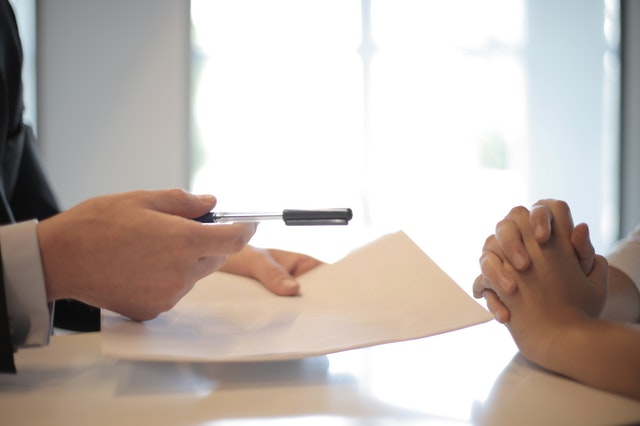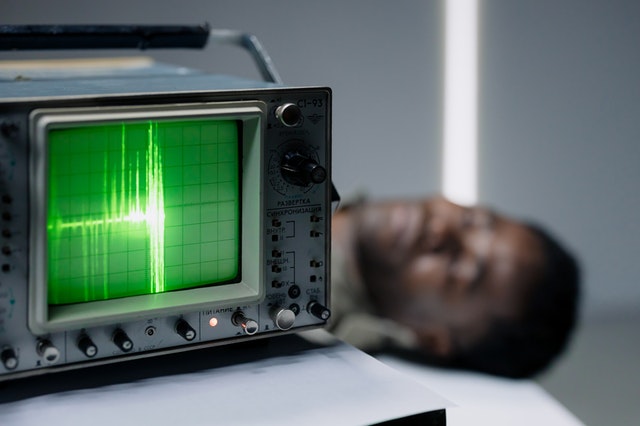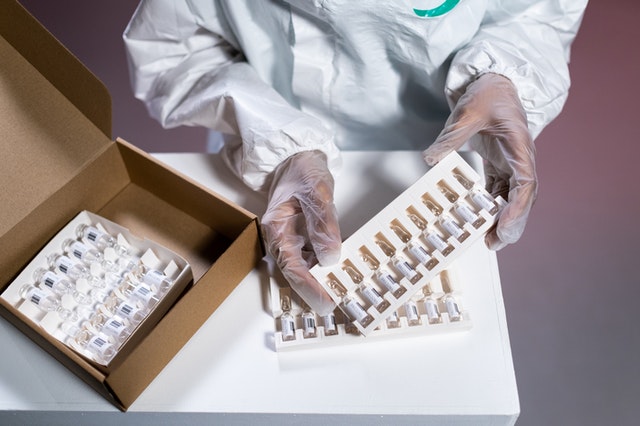Your CNA test will include a section on personal care support. The number of skills you are required to do will vary depending on the state where you take the test, but at least one personal care skill will almost certainly be included.
The bulk of the tasks you’ll be required to complete on your skills exam will include aiding with a patient’s hygiene or activities of daily life. In this blog, we’ll go through all eleven points of care CNA, starting with the first five and ending with the last six.
Point of Care CNA: First five personal care skills

Brushing dentures
Denture wearers may be required to clean their dentures as part of their oral hygiene routine. Dentures should be stored in a denture cup before and after washing to avoid being misplaced or thrown away. When doing this skill, remember to conduct the Opening Procedure and put on gloves before taking up the dentures, as they may be slippery. Line the sink with a little towel and fill it with water before taking the dentures from the cup so that if they slide out of your hands, they don’t hit the hard surface of the sink and break.
Brush the dentures like your natural teeth, be sure to clean the parts that come into contact with the gums, and use warm (not hot) water with denture cleaning or non-abrasive toothpaste. Place the dentures in an emesis basin while they are being cleaned so that the denture cup may be cleaned. Return the dentures to the cup of cold water after washing. Remove garbage and complete the Closing Procedure.
Mouth care
You may need to offer mouth care to unconscious patients to keep their mouths and teeth clean. Make sure you perform the Opening Procedure and put on gloves when doing this assignment on the skills exam. The patient should be positioned such that they do not aspirate any fluid, which might include lying on their side or raising their head no more than 30 degrees. To keep the patient clean, place a shield or covering over his or her clothes or chest. Clean the patient’s mouth and tongue using a toothbrush or sponge-tipped applicator and toothpaste. Rinse thoroughly, collect the fluid in an emesis basin, and suction as required. If a lip lubricant is available, apply it to the patient’s face and mouth. Close the procedure after disposing of used items in the trash.
Upper body partial bed bath
You may be requested to provide a partial bed bath to patients who are unconscious or immobilized. Perform the Opening Procedure and prepare a basin of warm water with clean washcloths for the upper body partial bed bath. To keep the bed clean and dry, a barrier should be placed between the patient and the bed sheets. To ensure warmth and privacy, cover the patient with a bath blanket and just uncover one part at a time. Begin with washing the patient’s face with a washcloth and soap before moving on to the rest of the upper body. To avoid contamination, clean, rinse, and pat dry all surfaces using a clean towel for each one. After the bath, make sure the patient is comfortable and covered, then dispose of the dirty linens in the proper receptacle and complete the Closing Procedure.
Lower body partial bed bath
As part of your skills exam, you may be requested to do a lower-body partial bed bath. You should follow the same methods as in the upper body partial bed bath, but start with the hips and work your way down to the lower body. When the bath is finished, be sure you put a clean washcloth on each area and that the patient is comfortable and covered.
Providing a Back Rub/Massage
You may also give a back rub or massage while giving a bath, which can aid with pain management or overall comfort. Position the patient comfortably on their side after performing the Opening Procedure and donning gloves, and make sure they are comfortable and covered with a bath blanket. To protect privacy, just uncover The areas that are required.
Warm the lotion before applying it to the patient by rubbing it between your hands. For three to five minutes, gently rub in long, circular motions from the lower back to the upper back and back down to the lower back. Ensure that the patient feels at ease during the procedure. Return the patient to a comfortable position at the completion of the massage, dispose of spent linens in the proper receptacle, cover the patient with a sheet or blanket, and complete the Closing Procedure.
We covered five skills you could be asked to do in this paragraph, and we’ll go over the remaining six personal care skills you might encounter during your skills exam in the next paragraph.
>>> Read more: CNA Skills: Transferring from Bed to Wheelchair
Point of Care CNA: Final six personal care skills
Female perineal care
Perineal care is crucial in avoiding urinary tract infections in female patients, thus this activity may be included in your skills exam. To execute this skill, after executing the Opening Procedure and donning gloves, help the patient, if necessary, into a frog-leg position, keeping the area covered to ensure privacy. A waterproof barrier pad can be placed under the patient, and a basin of warm water and washcloths should be prepared. Using a clean area of a washcloth for each downward stroke, gently wipe the skin of the perineal area from front to back. After cleaning the area, rinse it and pat it dry. Before performing Closing Procedure, remove the waterproof covering, dispose of dirty linens, change your gloves, and guide the patient into a comfortable position.
Shaving
Male patients who are unconscious or handicapped may require assistance shaving their faces in order to maintain a clean appearance. Perform the Opening Procedure, arrange supplies, and position a barrier beneath the supplies to keep your area clean and under the patient’s chin to protect clothes while shaving a patient. To prepare the skin, lay a cloth soaked in lukewarm water on the bottom half of the face, and if available, apply shaving cream. An electric razor should be used to reduce nicks and cuts. Shave along the direction of hair development, pulling the skin taut. After shaving, wash the area and pat the skin dry, then perform Closing Procedure after disposing of dirty supplies and linens.
Fingernail trimming
When a patient stays in the hospital for a long period of time, their fingernails may need to be cut. If the patient’s fingernails grow excessively long, they may scratch themselves or others. After the Opening Procedure, the patient’s fingers can be washed with soap and soaked in a basin of warm water. Dry hands well and trim nails straight across, taking care not to harm the flesh around nails. The edges of the nails can be smoothed with a nail file. If lotion is available, apply it to the hands before doing the Closing Procedure.
Assisting dressing with an immobile arm
If you’ve ever had an arm or shoulder injury, you know how difficult it is to change clothes with one arm. You may be requested to help a patient who has an immobilized arm as a CNA. Maintain the patient’s privacy by closing the door, pulling the curtain, and covering the patient’s body when feasible after conducting the Opening Procedure and preparing new clothing or a clean gown. Undressing the strong, mobile side of the body first allows the dirty clothing to be easily removed from the immobile arm. Dress the weak, immovable side of the patient first, bringing the arm entirely through the sleeve or opening and gently moving the arm without force. Encourage the patient to help with the dressing of the body’s strong side. Remove dirty linens and complete the Closing Procedure.
Read more >> 10 Good Qualities of a Nurse You Should Know
Serving and feeding a paralyzed patient
Paralyzed patients will require assistance with eating and drinking. After finishing the Opening Procedure, double-check that you have the proper patient and lunch tray, paying special attention if the patient has any food allergies. Drape a towel or cloth over the resident and cut the patient’s meal into bite-sized pieces. Any warm or hot meals or drinks should be checked for temperature. Slowly feed the patient, giving them time to chew between bites, and provide sips of water in between meals. Remove the tray, dispose of garbage and linens, clean the over-bed table, record the amount of food and drink consumed if necessary, and complete the Closing Procedure.
Assisting with bedpans
Your CNA tasks may involve assisting with bedpans to allow bedridden or immobile patients to void. After doing the Opening Procedure, ask the patient to turn onto their side (assisting as needed) and cover the bed with a waterproof barrier. Place the patient’s buttocks centered over the opening of the bedpan. To ensure privacy, drape the resident with a sheet or blanket, and raise the head of the bed if the patient wants. Remove your gloves and wash your hands before putting them on again.
Return the bed to a flat position and gently move the patient back onto their side, holding the bedpan in place to prevent the contents from spilling over the bed. Remove the bedpan and position it behind a barrier, at the foot of the bed, or on a chair to keep it out of the way. Make sure your genitals and buttocks are free of debris (refer to the above instructions for perineal care on technique). Return the patient to a comfortable position and remove the contents of the bedpan. Hands should be washed for at least one minute after changing gloves.
In your future role as a CNA, you may be concerned with supporting patients with activities of daily living that they typically conduct on their own outside of the hospital. Encourage the patient to engage as much as possible when doing these tasks, while maintaining their privacy and dignity.
We just offer you the point of care CNA in theory in this post. Besides, we also provide you with personal care assistant test questions and answers on our website in order to help you prepare for your personal care assistant test. In addition to taking the practice tests, you also should be well prepared for these caring assistant duties on your skills exam and in the real world before beginning your career as a CNA.
Visit our websites to get more information and free CNA practice test. To download, visit our website for your IOS or Android device.

Top Registered Nurse Interview Tips
Remember some important registered nurse interview tips in our post is an excellent way to ensure that you are well-prepared for the interview.
January 1, 2022

Everything That You Should Know About The CNA Online Test
Lots of students have wondered about the CNA online test as well as what should be remembered when taking it. Let’s get started!
January 1, 2022

All You Need To Know About Checking The Apical Pulse
What is the apical pulse which is the method to check it? Here we will help you with the following beneficial information. Let’s get started!
January 1, 2022

